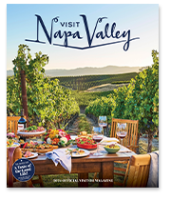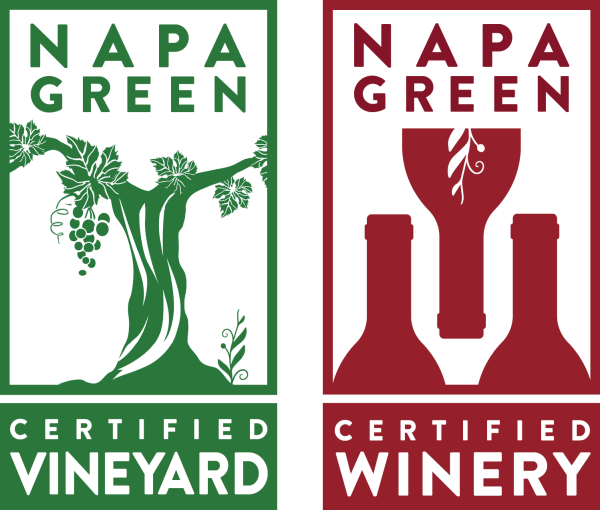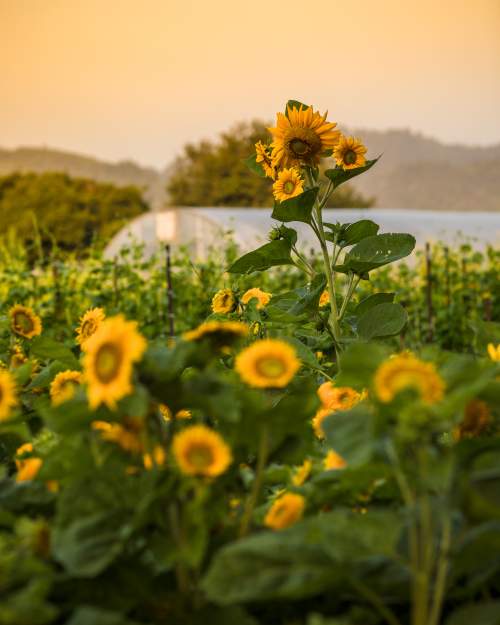Sustainable Travel
We love sharing our valley with you, and we hope you treat it as home, so we can share it with visitors for years to come.
We know sustainability is just as important to you as it is to us, so please help us in protecting the region’s natural beauty.
Here, you’ll find useful tips on how to be a sustainable traveler, and a list of some of our green wineries and most eco-friendly hotels.
How are we keeping Napa Valley
Forever Green?
Napa Valley is heavily invested in its agricultural land, becoming America’s first designated Agricultural Preserve in 1968. This zoning ordinance was the first of its kind, protecting the region’s natural beauty and landscapes for many future generations.
The Napa County Agricultural Preserve affects everything from how close to the road vines can be planted, to where on a hillside a house can be built. It originally protected 26,000 acres of the valley floor and foothills, and has since grown to 38,000 acres.
Sustainability efforts and environmental stewardship initiatives are the cornerstone of the Napa Valley ethos, with wineries, restaurants, hotels, and other businesses embracing eco-friendly practices like organic farming, solar energy, and water conservation.

Celebrate the Outdoors
In Napa Valley, embracing the natural beauty is not just an option – it's a way of life. Thanks to robust sustainability efforts and the establishment of the Napa County Agricultural Preserve, nature's splendor is not only preserved but celebrated.
Napa Valley Vine Trail
This multi-use paved path currently runs from the city of Napa up to Yountville, with plans to expand further north. Perfect for walkers, runners, cyclists, and families, the Vine Trail takes you on a scenic journey through Napa Valley's vineyards, parks, and downtown areas.
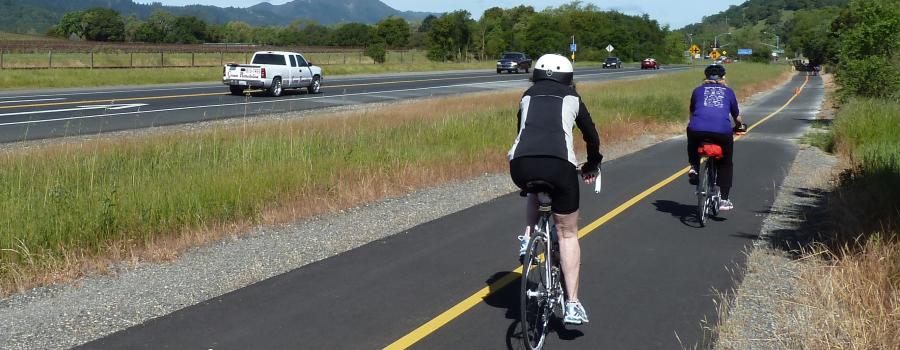
Hiking Trails
With most of the valley designated a protected agricultural preserve, Napa Valley has many amazing state parks, hiking trails, and open spaces. Explore the oak and redwood forests, mountains and rolling hills, creeks and stunning vista viewpoints.

Green Wineries
As one of only four sustainable wine-growing programs in the United States, local nonprofit Napa Green offers soil-to-bottle certifications for wineries and vineyards.
From soil to bottle, Napa Valley vintners and growers have been ahead of the curve with adopting practices that reduce water use, enhance soil health, and expand overall environmental and operational resilience while maintaining incredible wine and grape quality.
90+
Napa Green
Certified Wineries
40%
of California certified sustainable wineries are in Napa Valley
|
27M+ gallons |
14M+ kilowatt hours |
$5M+ energy |
Sustainable wine certifications
Organic
The wine is either made from organically grown grapes, without the use of sulfites, or it’s made from certified organically grown grapes and avoids all synthetic pesticides.
Biodynamic
Similar to organic wines and avoids synthetic chemicals, but goes a step further and views the vineyard as an entire ecosystem. Wines are made without common manipulations such as yeast additions or acidity adjustments.
LEED
Leadership in Energy and Environmental Design certification means the winery itself has been built and is operated in an ecologically sound manner: sustainable site development, water savings, energy efficiency, material selection, and environmental quality.
Did You Know?
Rutherford AVA Leads the Way in Sustainable Winegrowing
Rutherford is the first appellation to achieve 100% participation in the Napa Green Land program.
Sustainable Travel Tips
Thank you for doing your part to keep Napa Valley beautiful!
- Admire from afar. Vineyards are a delicate ecosystem. Please refrain from walking through the vines unless you’re invited to do so during a winery tour.
- Shop local. Learn more about how shopping and eating locally grown foods affects the Napa Valley community for the better. Buy fresh produce from the area farmers’ markets and support regional growers.
- Skip the plastic bag. Avoid store-issued plastic bags and bring reusable bags with you for all your purchases. And if you left your reusable tote at home, there are plenty of shops around Napa Valley that can offer a stylish, sustainable replacement.
- Hike responsibly. When you hike, please stay on marked trails. Just like vineyards, natural spaces have delicate ecosystems and it’s best to let wild areas stay wild.
- Park it. Save gas and bike or stroll our downtowns – Napa, Yountville, St. Helena, and Calistoga are particularly nice for a stroll.
- Pack it in and pack it out. Don’t leave trash behind at parks, open spaces, or wineries.

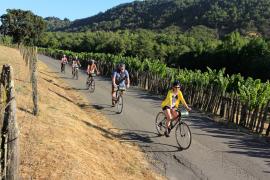
Eco-Friendly Hotels
Napa Valley has helped put green luxury on the map. While the majority of our hotels and resorts are committed to sustainability, water conservation, and green housekeeping practices, a handful of properties go above and beyond when it comes to eco-friendly amenities.
Tips for how to be sustainable during your stay
- You don't wash your sheets every night at home, so maybe skip the daily wash and do it every other day – the same goes for towels.
- Have a chat with the front desk or housekeeping staff to see what sustainability policies they already have in place that you can take advantage of.
- Separate your trash and recycling. If your room doesn’t have two separate bins, ask for another from the front desk.
- Bring your own reusable water bottle, and ask the staff to bring up a pitcher for your wine tasting ride. (Most wineries provide water along with a tasting.)
Did You Know?
Bardessono, in Yountville, is one of the few Platinum LEED-certified (the highest standard for environmental design) hotels in the United States.

